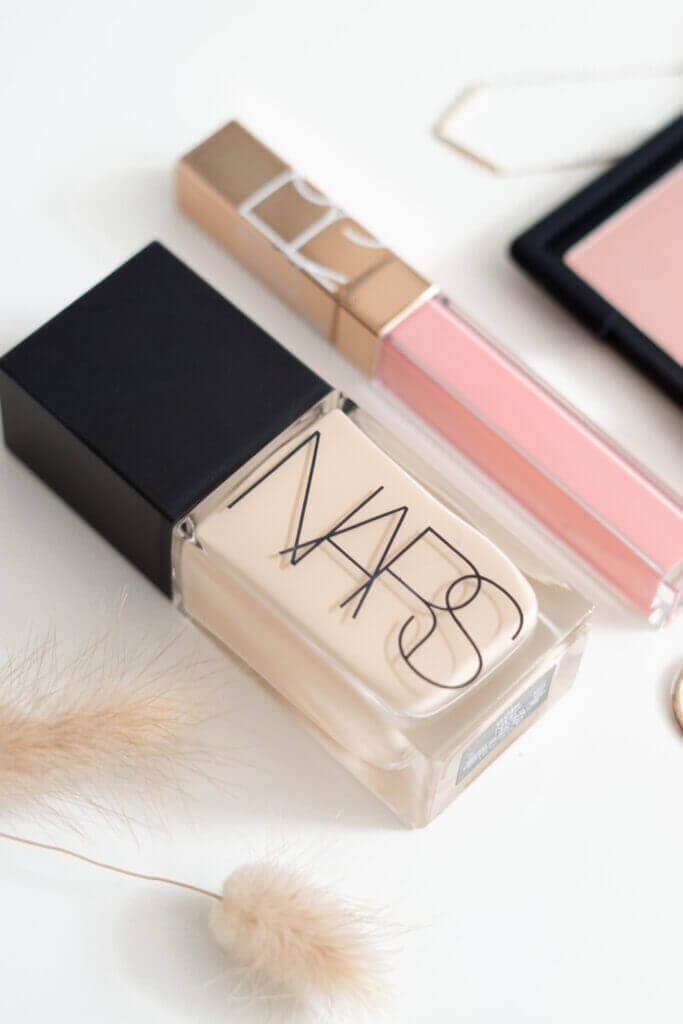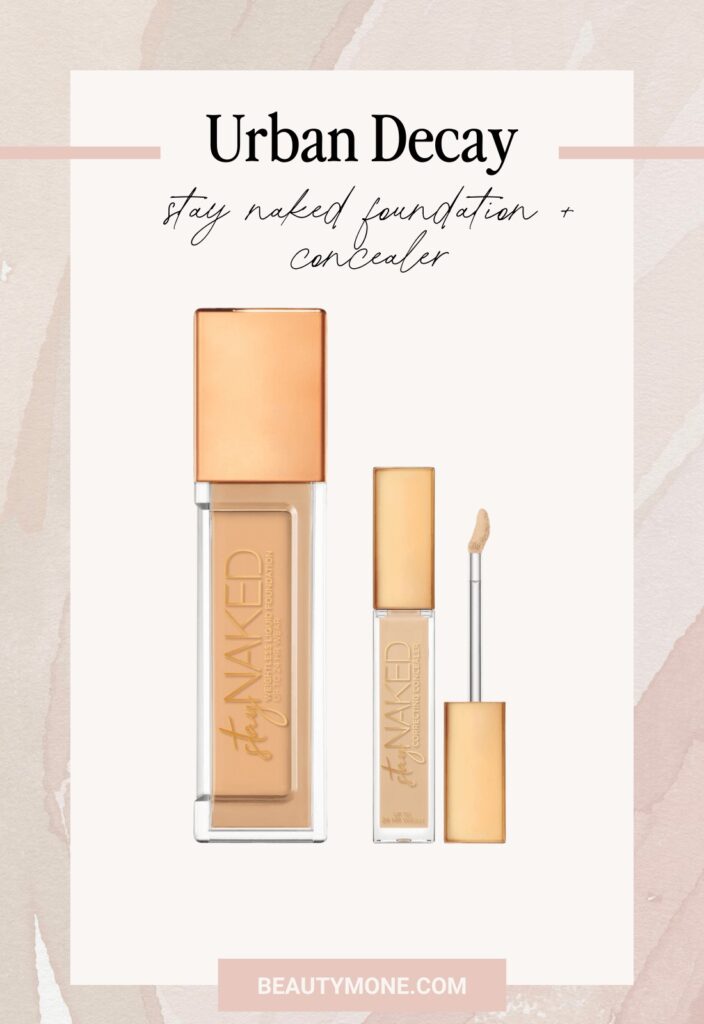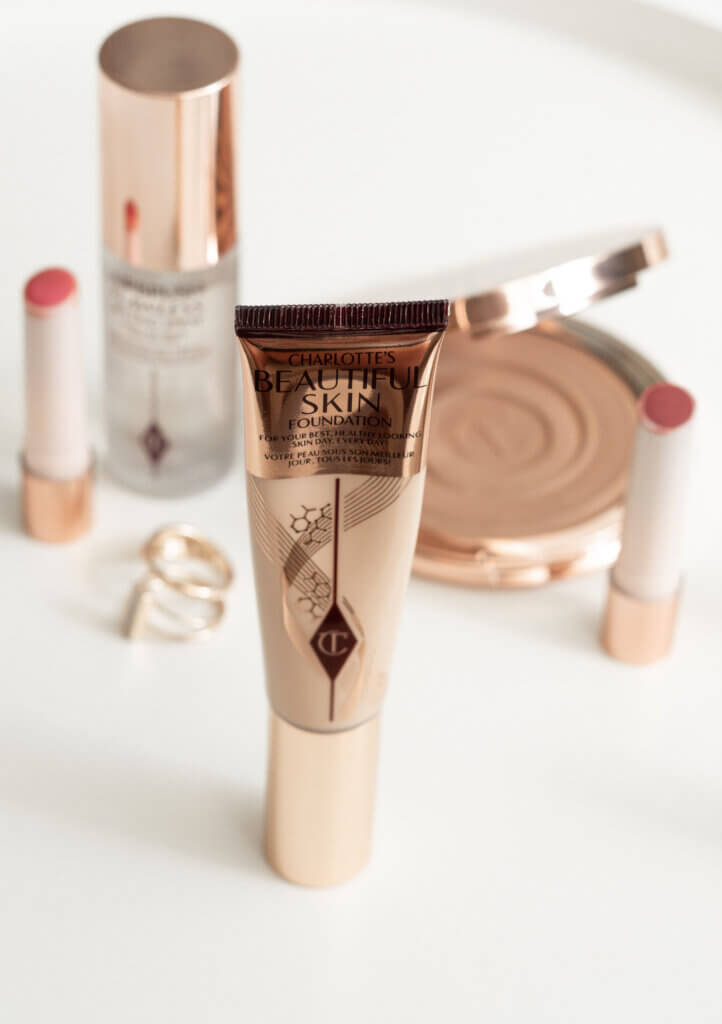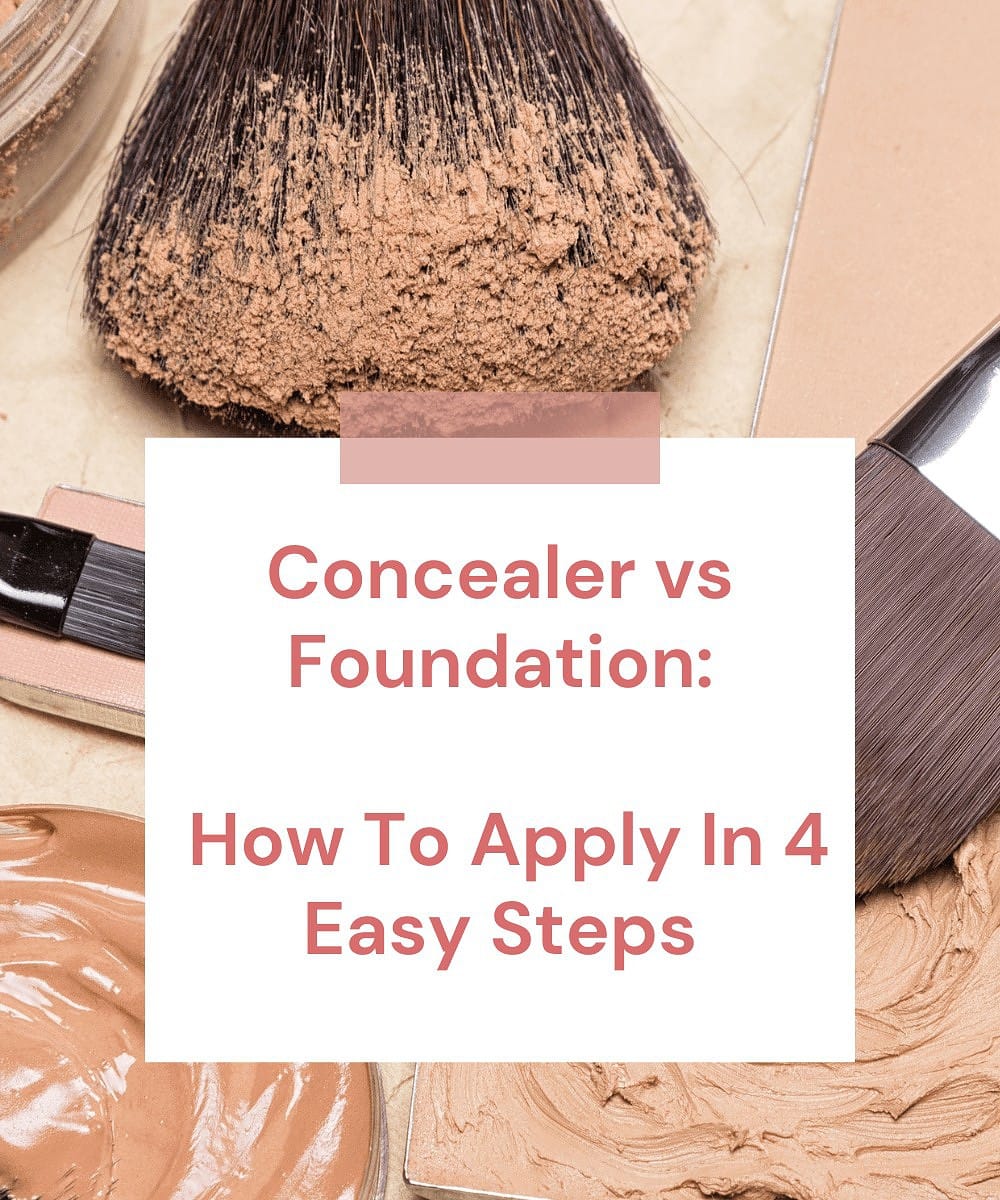
In the beauty industry, there are two staple products makeup artists couldn’t live without: Foundation and concealer. Some of you may be wondering, “What’s the difference between concealer vs foundation?”
After all, they look pretty much identical within their packaging. They’re creamy and tinted; you put them on your face, making your complexion appear flawless. Same thing, right? NOPE!
While there isn’t really a right or wrong to using concealer and foundation, there are some key differences between them. I can imagine that it just ends up confusing for certain people trying to implement them in their routines. No worries!
In this post, I’ll fill you in on all the components that separate foundation from concealer, their main differences, and how to properly use them together. Keep reading below to find out!
What Is Concealer?
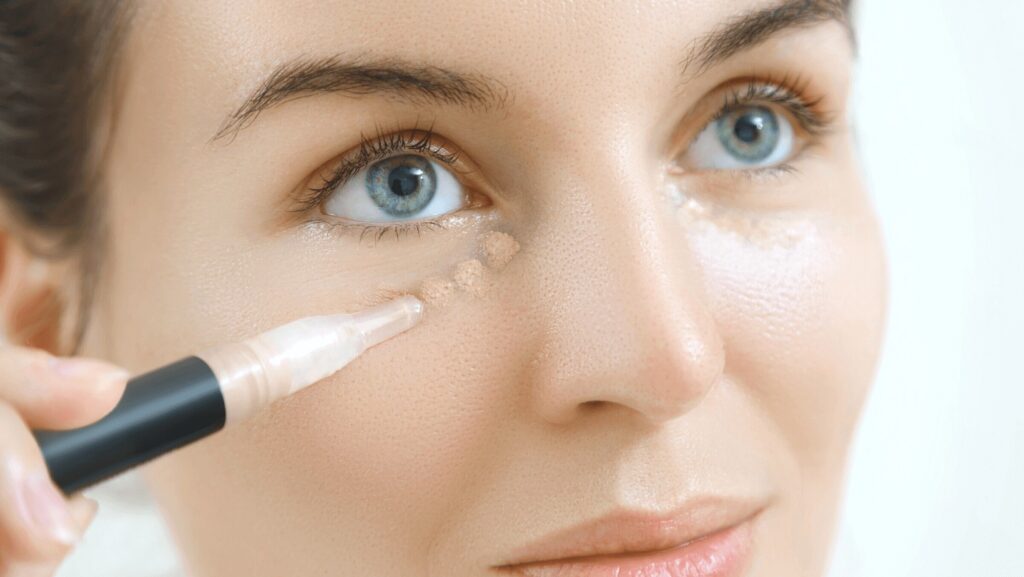
Concealer is specifically meant to conceal problem areas of your face. It covers darkness, discoloration, blemishes, and spots perfectly.
It is also used to highlight certain parts of your face- such as the cheekbones and ridge of the nose- to enhance your face’s definition by adding highlights. With highlights contrasting against lowlights added with the application of bronzer, the natural definition of your face will pop and take on a whole new level.
Foundation and concealer are similar in many ways, but the key difference is in the formulation. Concealers are often thicker in consistency, and more pigmented, meaning they have greater staying power and their coverage is fuller. Mind you, there are quite some light coverage concealers out there, too, nowadays.
Formulas of Concealer
- Liquid Concealer: the most well-known and popular formula of concealers. They’re available in many skin tones and undertones, so it’s easy to find the right match. They often come in light to full coverage, glide on, and dry down matte or slightly luminous, depending on the finish.
- Cream Concealer: these are often fuller coverage and thicker in texture than liquid concealers. Cream formulas often work amazingly to cover up redness and/or acne.
- Stick Concealer: often perfect for oily skin types due to its matte finish. Like cream concealers, the formula is often thicker and has fuller coverage than liquid concealers.
Picking The Right Concealer
Concealers can sometimes produce less than desirable-results. This often has to do with the specific formula being ineffective or unsuited to your skin type or due to the way it’s been applied. For example, if the formula you picked is best suited for oily skin while you have dry skin, you better believe it will look cakey and creasy.
For these reasons, it is essential to choose the formula that is right for your skin type and is color-matched. If you struggle with choosing the right formula and/or color, I recommend going in-store and asking for advice. Beauty experts can help you find the perfect concealer!
One concealer might not be enough. As the season’s change, so does my skin color. I like to have a lighter concealer for winter and a darker concealer for summer.
On top of that, I like to use a lighter concealer to lighten up my under-eye area, whereas I like to use a perfect skin tone match of concealer for other areas of my face. Using a perfect color match is also advised to cover spots and blemishes.
Color-Correcting With Concealer
Though it most commonly comes in skin tones, concealers can also come in green, purple, yellow, and peach tones for color correcting. These are specifically formulated to counteract discoloration and scarring.
- Green: neutralizes redness;
- Purple: corrects yellow undertones;
- Pink: hides dark circles and brightens fair skin tones;
- Peach: counteract purplish-gray-toned darkness under the eyes;
- Yellow: hides dark circles and brightens light and dark skin tones.
Applying Concealer
It is a creamy substance that should be applied with a small stippling brush with synthetic bristles, a makeup sponge, or with your fingertips. The warmth of your fingers will help to blend the product into your skin perfectly.
My favorite way to apply concealer is with a damp sponge. This technique blends to perfection, leaving a streakless finish, and is particularly suitable for sensitive skin. A small sponge or brush is ideal for applying concealer to the under-eye area, as it helps with precise application.
Concealer Recommendations
The NARS Radiant Creamy Concealer is an old, trusted friend of mine! It’s been here for me at my lowest beauty moments and has always pulled through to help me out of messy situations. I recommend this product as a highlight and darkness cover-up, but it works just as well to cover up nasty blemishes.
For color-correcting concealer, try the NYX 3C Color Correcting Concealer Palette, which comes in various colors to meet your neutralization needs. NYX is also available for a super affordable price!
For even more recommendations, check out this list of 25 top-notch concealers.
What Is Foundation?
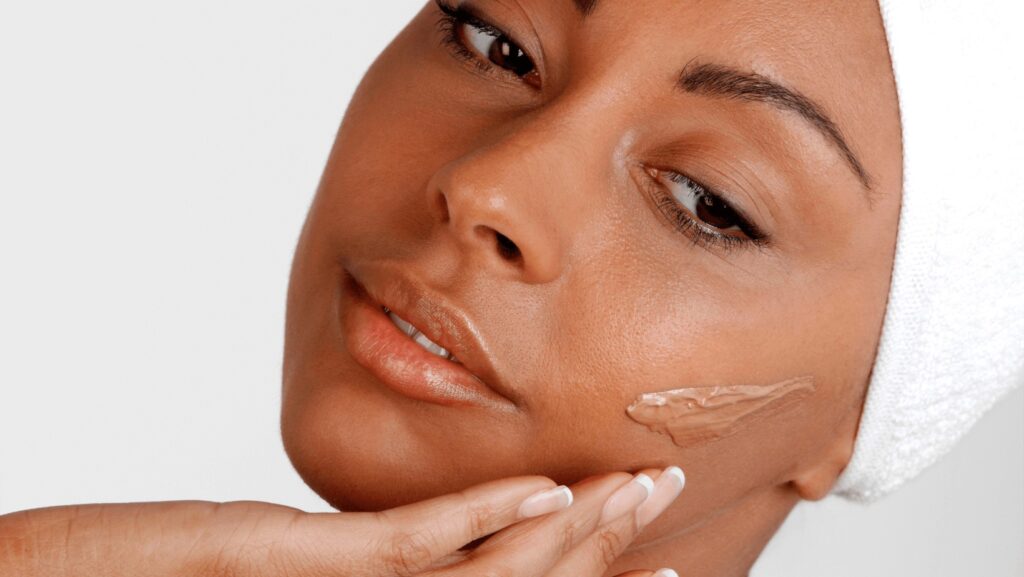
Foundation is meant to be applied to the entire face, right from the hairline and down to the neck. Foundation is a creamy substance much like a concealer but comes in way more different formulas and finishes. The options are endless, from matte to dewy and light coverage to full coverage.
Coverage Of Foundation
You can choose the coverage strength of your foundation, ranging from sheer to full coverage. This comes down to the level of pigmentation within the formula.
- Sheer Coverage: achieves the most natural, see-through look.
- Light Coverage: this is still quite see-through but will leave slightly more coverage than sheer formulas.
- Medium Coverage: it has quite the coverage power for the people that want to cover up quite a bit but not everything.
- Full Coverage: this is perfect for full-glam events or for people that want to cover up any redness, acne, or anything else.
Formulas Of Foundation
The most common types of foundations have the following formulas:
- Liquid Foundation: They have a liquid formula, often silicone-based or water-based. They’re available in light to full coverage, are easy to blend, and are lightweight formulas.
- Cream Foundation: These foundations often have a thicker formula with more coverage. However, they’re not uncomfortable. These types of formulas work great to cover up acne or uneven skin.
- Stick Foundation: Like cream foundations, stick foundations often come in a thicker formula with more coverage. However, they’re packed in stick packaging, so you can easily travel with them.
- Powder Foundation: They are available in lightweight pressed or loose powder formulas with a matte or luminous finish. Some of them even have oil-absorbing properties, perfect for oily skin.
- BB/CC Cream: The lightest options for foundation are BB/CC Creams. Those are often quite sheer but contain just enough coverage to make your skin appear flawless. CC Creams are color-correcting creams that will help you correct skin discolorations or redness.
Conclusion: Powders are a brilliant option for those of you after sheer coverage or with oily skin types. The powder can be easily applied throughout the day and works to absorb excess oil buildup on the skin. Liquid or stick foundations are the best option for dry skin, as these won’t look as cakey as powder products.
Applying Foundation
Application of foundation is best done with a medium-sized stippling brush or makeup sponge. Be sure to dab and pat the foundation onto your skin rather than swiping it across your face, as these motions are best for settling the substance onto your skin.
With your foundation applied, you are left with a clear canvas on which you can add definition and color with blush, bronzer, and highlighter.
Foundation Recommendations
For a great foundation, Rihanna’s Fenty Beauty Pro Filt’r Foundation, Eaze Drop Skin Tint, and even more in her base collection have perhaps the most extensive range of color tones and varying formulas to suit dry and oily skin.
For something a little less pricey, Maybelline Fit Me Foundations are an affordable go-to. These also come in many colors and are tried and trusted by many. Though not quite as well-formulated as products from brands such as Fenty, it is an excellent product for the price!
Concealer vs Foundation: What’s The Difference?
Concealer vs Foundation: At first glance, foundation and concealer look much the same. They are both tinted, creamy substances that achieve similar results. However, they are each specially formulated to target perfect different imperfections.
Can You Use Concealer as Foundation?
You could use concealer as a foundation if you want to, but I wouldn’t recommend it. The thicker consistency of the concealer is not the best option for application to the entire face. It could end up looking pretty cakey.
For instance, you might choose to use only concealer if you have clear and even skin, with only a few blemishes or dark areas you want to cover up. This is a great option, but make sure not to use more concealer than is necessary to cover up those imperfections.
And remember, always start with less, and add more as needed. It is easier to add concealer than to remove it halfway through your makeup routine.
Concealer Or Foundation First?
Nowadays, you’re seeing both. Some people use concealer first and apply foundation on top; others apply foundation first and concealer on top. I’m part of the second group because I’m naturally more drawn to foundation first, then concealer under the eyes. However, again, both are possible, so there is actually no right or wrong!
For coverage of dark circles under your eyes, apply your color-correcting concealer first. You’ll then apply your foundation- you could apply it on top or, rather meet it and blend them.
For lightening under the eyes, you’ll want to use a lighter-colored concealer that brightens up those areas and apply this after you apply your foundation.
Can You Wear Concealer Alone?
Some beauty gurus opt for the sole use of concealer without foundation. This is great if you prefer a more natural look and can do without the full coverage that the foundation provides.
If you have a clear skin tone but have some blemishes and under-eye bags that could do with some cover, then the foundation may not be necessary to achieve a flawless look, but a concealer will do.
How to Apply Concealer and Foundation
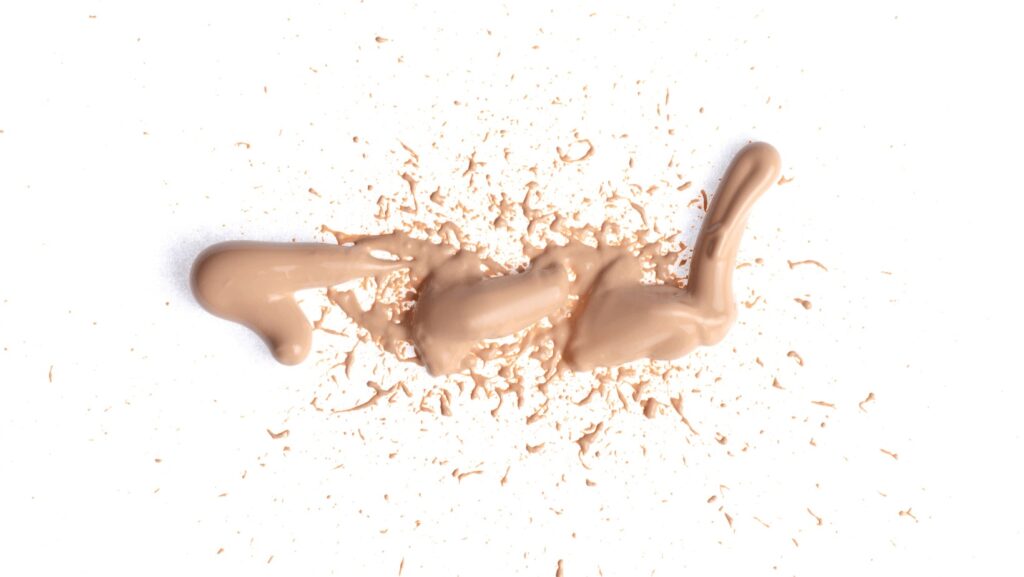
It is so, so, so crucial that you apply concealer and/or foundation to clean and moisturize skin. If your skin is oily or dirty, this will show after you have applied your concealer and foundation. They will also struggle to stay put all day on unclean skin.
Step 1: Apply Primer
After cleansing, applying any serums, moisturizing, and, most importantly, applying for SPF protection, you can apply your primer. Primer with SPF protection is a bonus for that added layer of defense against UV rays.
Using clean fingertips, apply primer to your face and neck in circular motions. There are different types of primers to suit oily and dry skin. Primer will set you up for the day, keeping your skin perfectly moisturized or excess oil-free to preserve your concealer and foundation.
The Laura Mercier Pure Canvas Primer SPF 30 is an award-winning formula loaded with vitamins, and it is suitable for all skin types.
Step 2: Apply Foundation
Many people prefer a moistened sponge such as the Beauty Blender for their foundation application, but I prefer a good foundation brush with synthetic bristles. My current favorite brush is the Sephora Collection Pro Foundation #70 Brush.
Be sure to use a stippling motion (patting or dabbing in quick movements) rather than dragging the applicator across your face, which moves the product around rather than settling it.
Step 3: Apply Concealer
Apply concealer first to all problem areas if you use a powder foundation, as the powder is easily brushed over a cream or liquid concealer. Apply your concealer before or after your liquid foundation to cover up under-eye bags if you want to.
But for any other purpose, such as to cover up blemishes, you will want to apply concealer on top of your liquid foundation. This is because your concealer will likely get smudged out in applying a liquid foundation over the top.
My makeup sponge is my favorite tool for applying concealer. Go easy with concealer application; just apply a couple of dots and dab it into the skin. Avoid looking too caked up by applying small amounts, layer by layer, until you have achieved the desired coverage of spots and discoloration.
For brightening and sculpting, follow the same rule. You don’t want to overdo the color contrast and end up with too bold a look (unless bold is what you’re after!).
Step 4: Apply Setting Powder
Setting powder is crucial to hold your makeup in place all day long. It also gives your skin a matte appearance, meaning you won’t look shiny or sticky. If you pick a powder like the Kosas Cloud Set Setting Powder, it won’t mattify your look but does set it into place, which is an excellent option for dry skin types.
Setting powder can be translucent or skin toned and comes in various coverage levels. For extra coverage added to your concealer and foundation, a tinted full coverage setting powder will complete your flawless look and keep you glowing all day long. Try the BareMinerals Original Loose Powder Foundation for full and long-lasting coverage. This powder is also SPF 15, which is so vital for the health of your skin.
Key Takeaways
After reading this post, you’ll now know the difference between concealer vs foundation and why it’s so important not to get them confused or to use them in the exact same way. Though they are similar in fundamental ways, they produce different effects that can seriously make or break your makeup look.
- It’s of the most significant importance that you find the right products to suit your needs.
- Don’t be afraid to test products in-store and to ask for advice from beauty experts who have specialist knowledge of the products!
- Choose the right color and consistency to suit your skin type, and go for widely recommended brands.
- In the end, getting the perfect combination of products and application technique comes down to experimentation.
With this guide, you’ll be on the road to flawlessness in no time!
FAQ
Related Posts

